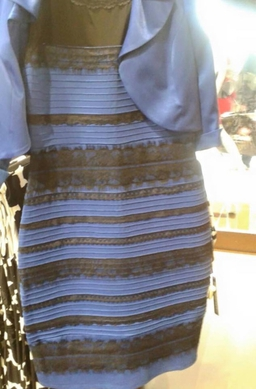Perceptual diversity
Do you remember the 2015 dress debate? This picture went viral, with half the world arguing it was a black and blue dress and the other half arguing it was a gold and white dress:

Are you team #blueandblack or #whiteandgold?
I was reminded of this viral meme again in a recent episode of the Within Reason podcast by Alex O’Conner, featuring Anil Seth, author of the book Being You: A New Science of Consciousness.
The episode focuses on the counterintuitive idea that our perception of the world isn’t based entirely our senses, but rather a predictive model that our brain assembles from previous experience, biological predisposition, and some sensory inputs.
You can listen to the entire episode, but here’s the bit that I was particularly interested in, from around the 30-minute mark:
“We all see the same world slightly differently, even if we don’t recognize that we do. This is a bit counterintuitive. If we start from the kind of naïve realism that we see and hear things as they are, then, of course, we would just naturally expect or assume without thinking that somebody else sharing the same environment is going to be experiencing things in exactly the same way… It really seems as though I’m seeing the world as it is, in a way that independent of my own brain and mind.
But if that’s not the case, then just as we all have different bodies and skin color and height, we all have different brains. We’re going to exhibit a kind of inner diversity as much as we exhibit external diversity. We have a perceptual diversity.
When the diversity gets sufficiently large, we slap a label on it: autism, schizophrenia, etc. But there’s this whole middle range where most people just assume that we have the same subjective encounter with things. Sometimes this is thrown into doubt, like in the social media meme of the dress.
[The dress meme] surfaced that we do bring to bear this kind of naive realism about our experiences. It’s very hard for us to even conceptualize that somebody else might experience the same thing — our “reality” — differently.
A big part of my job is working to create digital products and services that people use. And where there’s people, there’s a potential for perceptual diversity, especially when it comes to UX.
- Am I humble enough to consider that my perception of a thing might be different from someone else’s?
- Do I care enough to do research to help me better understand the differences?
- How do I address or account for these differences in the way I build digital products?
While I was writing this, my 9-year-old son came up and asked, “Dad… that white and gold dress. What color was it really?”
We all want to know if our take on reality is the right one, don’t we?
—
Cheers,

Up Next: Users are valuable
Design Systems Daily
Sign up to get daily bite-sized insights in your inbox about design systems, product design, and team-building:
New to design systems?
Start with my free 30-day email course →